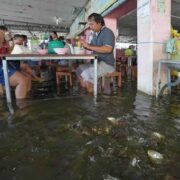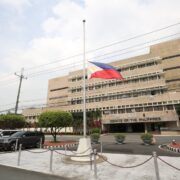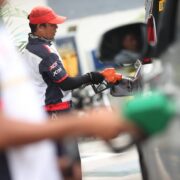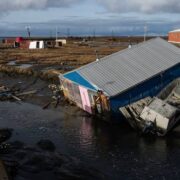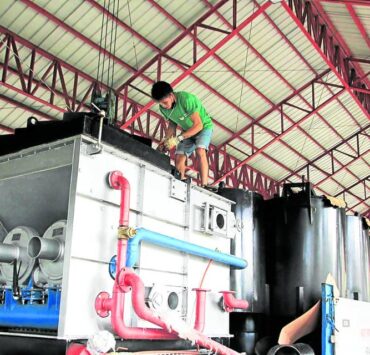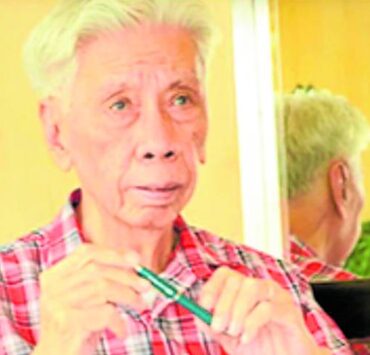Bohol’s famous beach turns empty amid storm
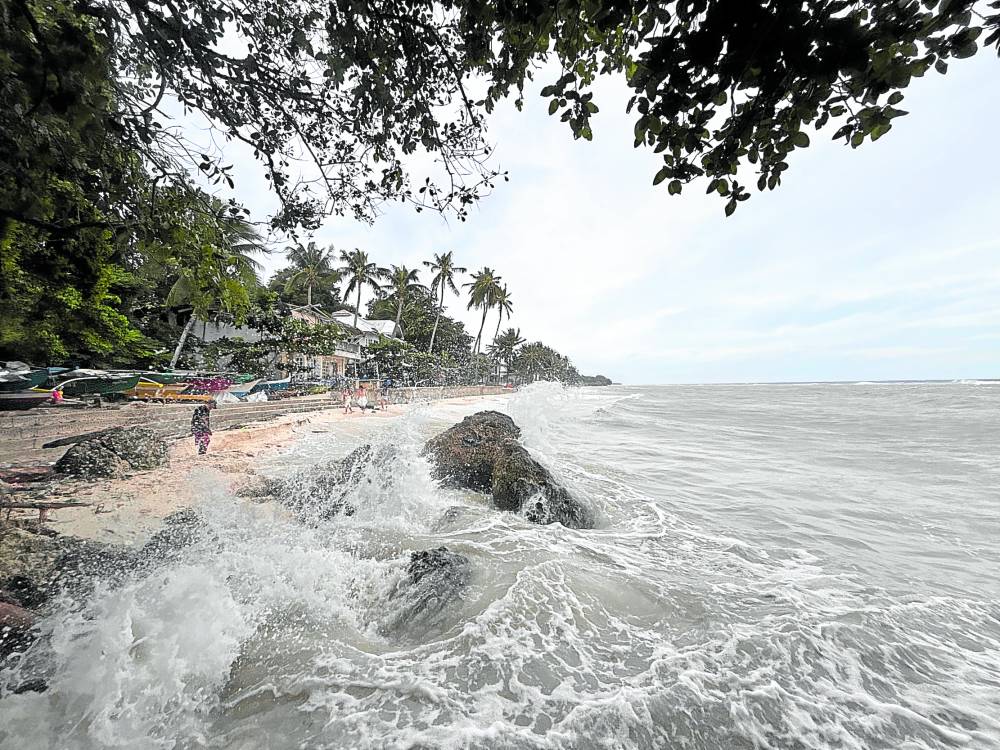
PANGLAO, BOHOL—The usually bustling Alona Beach in this town turned eerily quiet on Friday as strong winds and crashing waves—brought by Tropical Storm “Crising” and the southwest monsoon (“habagat”)—pounded the coastline.
White sea foam blanketed the beach’s iconic white sand, while coconut trees bent under the forceful gusts. The turbulent weather left the beachfront deserted, with most tourists staying indoors.
A few Korean tourists, however, were spotted braving the winds to snap photos of the dramatic surf.
“It’s lovely [to see]. [It’s] powerful and beautiful,” said Rebecca Khang, 43, a resident of Gangwon-do district in South Korea. She was with her friends here for a vacation.
On high alert
Local dive shop worker Jose Jorserada said a motorbanca was damaged by the waves. Its owner, identified only as Larry, reportedly secured the boat’s engine and let it drift offshore to prevent further damage.
Some tourist boats from Panglao sought refuge near the causeway between Tagbilaran City and Barangay Totolan in Dauis—a traditional safe haven for vessels during stormy weather.
In the other side of Panglao, tourists stayed indoors in Marilou Dumaluan Beach area in Barangay Bolod.
The Panglao Municipal Disaster Risk Reduction and Management Office (MDRRMO) confirmed that all water activities in the town had been suspended since Thursday.
“We remain on high alert to ensure immediate response to any untoward incidents,” the MDRRMO stated in a public advisory posted on Facebook.
Alona Beach, a 1.5-kilometer stretch named after actress Alona Alegre—who famously ran nude along its shores during the filming of the 1973 movie “Esteban”—is typically alive with swimming, diving and nightlife. But on Friday, nature reclaimed the shore.








